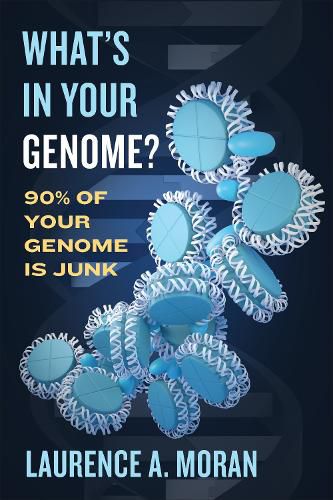Readings Newsletter
Become a Readings Member to make your shopping experience even easier.
Sign in or sign up for free!
You’re not far away from qualifying for FREE standard shipping within Australia
You’ve qualified for FREE standard shipping within Australia
The cart is loading…






What's in Your Genome? describes the functional regions of the human genome, the evidence that 90% of it is junk DNA, and the reasons this evidence has not been widely accepted by the popular press and much of the scientific community.
The human genome contains about 25,000 protein-coding and noncoding genes and many other functional elements, such as origins of replication, regulatory elements, and centromeres. Functional elements occupy only about 10% of the more than three billion base pairs in the human genome. Much of the rest is composed of ancient fragments of broken genes, transposons, and viruses. Almost all of this is thought to be junk DNA, based on evidence that dates back fifty years.
This conclusion is controversial. What's in Your Genome? describes the arguments on both sides of the debate and attempts to explain the reasoning behind those different points of view. The book aims to correct a number of false narratives that have arisen in recent years and examine how they have affected the debate over junk DNA. In addition, Laurence A. Moran focuses on scientific misconceptions and misinformation and on how the junk DNA controversy has been incorrectly portrayed in both the scientific literature and the popular press. Tracing the earliest indications of junk DNA back to the 1960s, the book explains the success of Nearly-Neutral Theory and the importance of random genetic drift, which gave rise to the view that evolution produces sloppy genomes full of junk DNA. What's in Your Genome? aims to offer the most accurate and current account of the human genome.
$9.00 standard shipping within Australia
FREE standard shipping within Australia for orders over $100.00
Express & International shipping calculated at checkout
What's in Your Genome? describes the functional regions of the human genome, the evidence that 90% of it is junk DNA, and the reasons this evidence has not been widely accepted by the popular press and much of the scientific community.
The human genome contains about 25,000 protein-coding and noncoding genes and many other functional elements, such as origins of replication, regulatory elements, and centromeres. Functional elements occupy only about 10% of the more than three billion base pairs in the human genome. Much of the rest is composed of ancient fragments of broken genes, transposons, and viruses. Almost all of this is thought to be junk DNA, based on evidence that dates back fifty years.
This conclusion is controversial. What's in Your Genome? describes the arguments on both sides of the debate and attempts to explain the reasoning behind those different points of view. The book aims to correct a number of false narratives that have arisen in recent years and examine how they have affected the debate over junk DNA. In addition, Laurence A. Moran focuses on scientific misconceptions and misinformation and on how the junk DNA controversy has been incorrectly portrayed in both the scientific literature and the popular press. Tracing the earliest indications of junk DNA back to the 1960s, the book explains the success of Nearly-Neutral Theory and the importance of random genetic drift, which gave rise to the view that evolution produces sloppy genomes full of junk DNA. What's in Your Genome? aims to offer the most accurate and current account of the human genome.